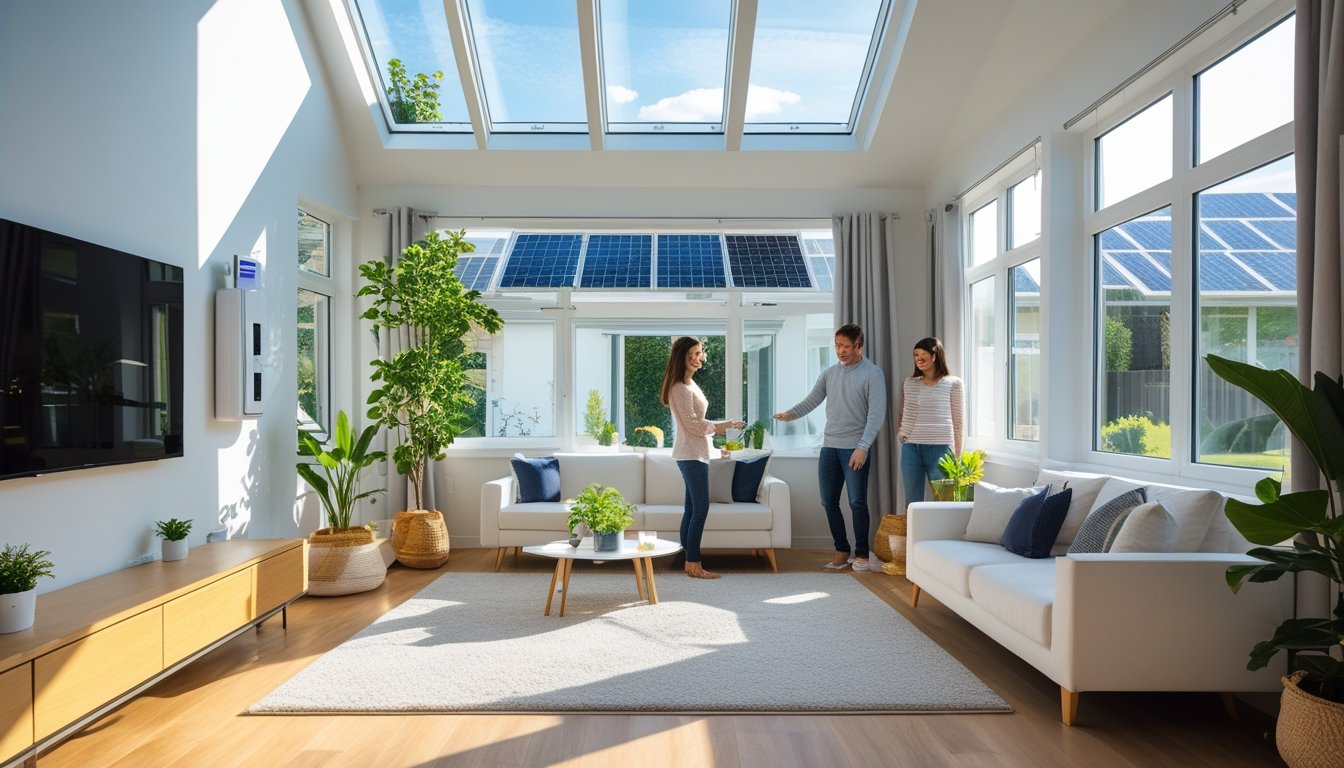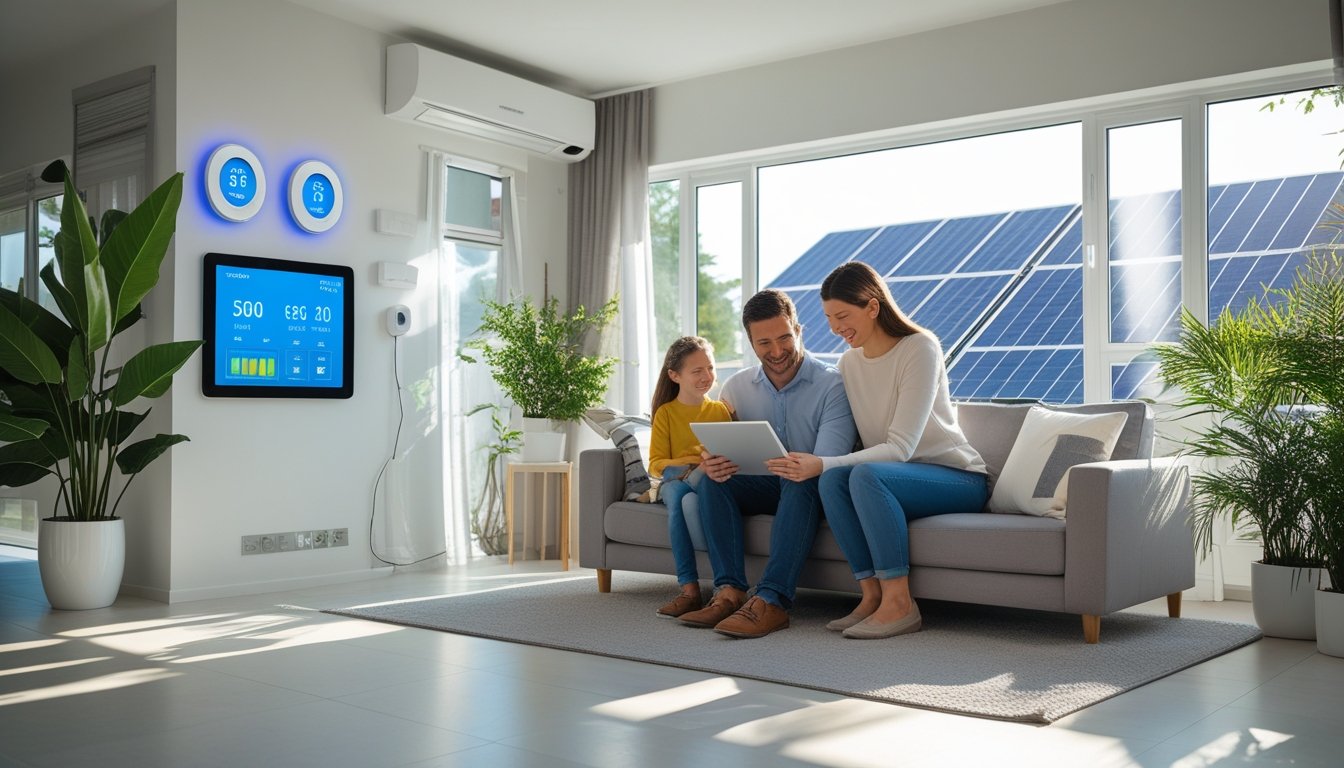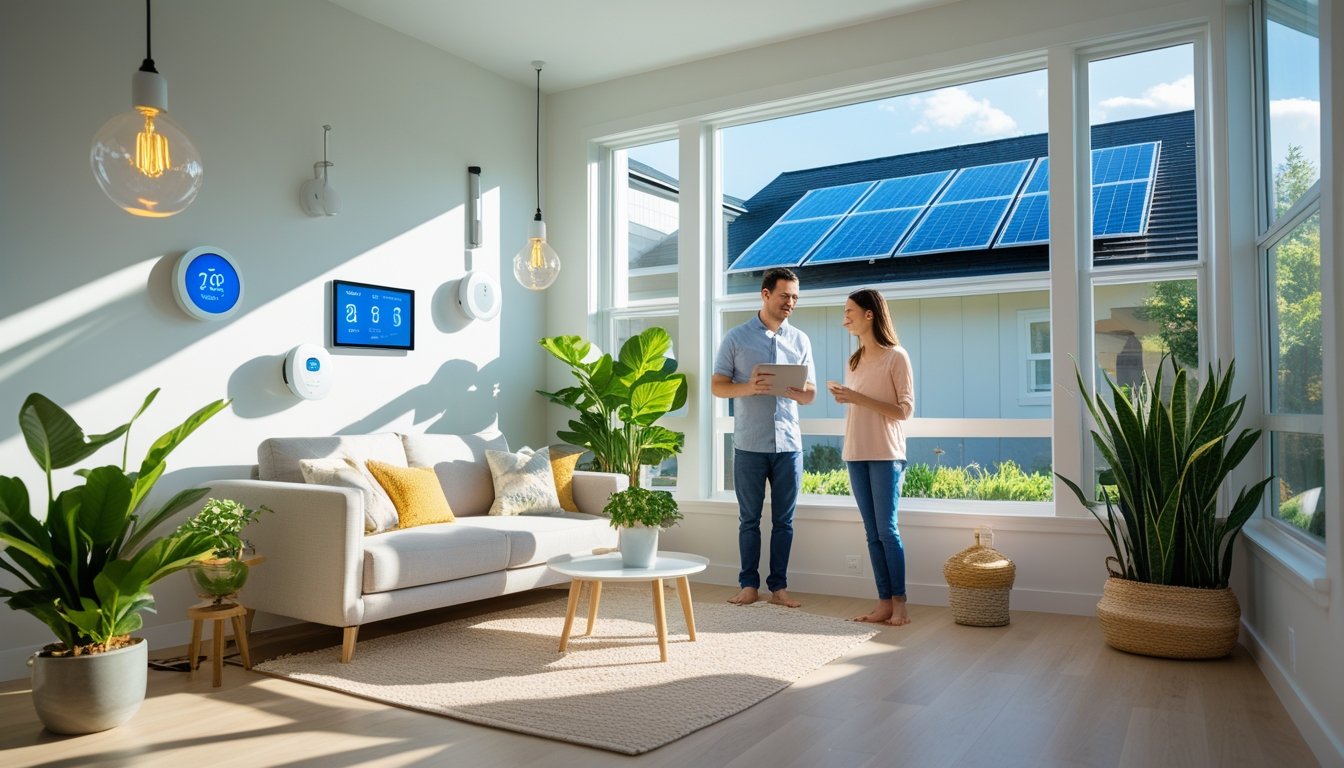Late updated: 18 May 2025 14:05
Written by: Sarah Hollister
How To Make Your Home More Energy Efficient: Top Tips for Saving Money and Energy
In a world where energy efficiency has never been more critical, we find ourselves frequently asking how we can transform our homes into paragons of sustainable living. Making your home energy-efficient isn't just about reducing your carbon footprint—it's also about reducing your monthly expenses. One of the most impactful changes we can make involves sealing and insulating our homes effectively, which reduces energy consumption and boosts comfort.

While some solutions may require a larger initial investment, many approaches are surprisingly accessible and affordable. From simply changing HVAC air filters to strategically planting trees to block the sun, there are countless ways to upgrade our living spaces for the better. Small, thoughtful adjustments in our daily habits can significantly reduce energy waste.
Whether we're exploring high-tech solutions or tweaking everyday behaviours, the quest for an energy-efficient home is a rewarding journey that benefits both our wallets and the environment. Let's delve into some practical and transformative strategies.
Key Takeaways
- Evaluate essential home upgrades for energy savings.
- Implement advanced strategies for maximising efficiency.
- Address common energy efficiency queries.
Essential Upgrades for an Energy-Efficient Home
Making your home energy-efficient involves various upgrades, from enhancing insulation to choosing the right appliances. These changes can lower energy costs, reduce environmental impact, and create a more comfortable living space.
Insulation and Draught-Proofing
Proper insulation is essential to maintain comfortable temperatures year-round. Insulating walls, floors, and lofts helps reduce heat loss during winter and keeps heat out in summer. Draught-proofing is equally important. We should ensure doors and windows are sealed properly to prevent cold air infiltration. Using insulating materials like fibreglass or cellulose in your loft and wall cavities makes a significant difference. Weatherstripping on doors and windows is a cost-effective method to improve energy efficiency.
Heating and Cooling Efficiency
Upgrading heating and cooling systems can dramatically impact energy usage. Installing a modern, efficient boiler or an ENERGY STAR-rated heat pump ensures optimal performance. Smart thermostats offer precise control over heating schedules and temperatures, improving efficiency. Regular maintenance of systems, such as cleaning filters in heating and cooling units, also enhances performance and reduces energy use. Zoning systems allow us to heat or cool specific areas only when needed, enhancing comfort and efficiency.
Windows and Doors Improvements
Replacing old windows and doors with energy-efficient options reduces energy loss. ENERGY STAR-rated windows with low-emissivity (low-e) coatings limit heat transfer, keeping interiors warm in winter and cool in summer. Draught-proof seals around windows and doors further minimise energy waste. We can consider double or triple glazing to enhance thermal performance, lowering energy costs significantly. Proper installation is crucial to ensure these benefits are fully realised.
Upgrading Appliances and Lighting
Switching to energy-efficient appliances not only reduces energy costs but also lessens environmental impact. Look for ENERGY STAR-rated appliances to ensure high performance with lower energy use. Lighting also plays a key role; LED bulbs consume less energy and last longer than traditional options. Smart lighting systems allow us to control bulbs remotely, maximising efficiency. Upgrading appliances and lighting is a straightforward way to boost the efficiency of your home.
Advanced Strategies to Maximise Energy Savings

Implementing advanced strategies can substantially increase the energy efficiency of our homes. We'll explore sophisticated methods including smart home technologies, the integration of renewable energy, optimised water heating systems, and strategic landscaping. These strategies not only reduce energy consumption but also enhance our comfort and provide long-term cost savings.
Smart Thermostats and Sensors
Smart thermostats offer precise control over our heating and cooling systems, learning our schedule and adjusting temperatures automatically. Unlike traditional thermostats, they can be controlled remotely, allowing us to reduce energy use when we're away.
Programmable thermostats are another layer of efficiency, letting us set predefined temperatures based on our routine. Motion sensors can work with thermostats to detect activity, optimising energy use based on occupancy.
Integrating ceiling fans and smart thermostats creates a dynamic system that maintains comfort efficiently. This synergy keeps energy costs down while ensuring that our home’s climate is comfortable throughout the year. Our adoption of these technologies positions us to make significant energy savings.
Renewable Energy and Passive Solutions
Renewable energy sources, such as solar panels, are excellent for those wanting to reduce traditional energy dependency. Harnessing the sun's energy transforms our home into a more sustainable environment. Passive solar heating uses design elements like large, south-facing windows to naturally warm spaces.
Skylights can also enhance lighting and heating efficiency by utilising natural sunlight, reducing the need for artificial lighting and heating. Solutions like these are beneficial both economically and environmentally, contributing to a significant reduction in greenhouse gas emissions. Incorporating renewable energy into our home gives us access to potential tax credits and incentives, further offsetting initial investment costs.
Water Heating Efficiency
Improving the efficiency of our water heating systems can lead to substantial savings. Switching to a tankless water heater eliminates standby energy losses from stored hot water, providing hot water on demand. Adjusting the temperature setting on traditional heaters can also contribute to savings.
Implementing power strips for the appliances in our kitchen, which can be turned off when not needed, reduces standby power consumption. Efficient insulation of the water heater and associated pipes minimises heat loss, ensuring that heat energy results in more effective space heating and hot water supply. These adjustments maximise the efficiency of water heating systems, reducing our energy costs significantly.
Landscaping and Home Design Considerations
Strategic landscaping and home design can further improve energy savings. Planting trees and shrubs on our property provides shade during summer and acts as a windbreak in winter, reducing heating and cooling demands.
Incorporating green building features into home design, such as reflective roofing materials and insulated windows, optimises energy use. An energy audit identifies areas where we can make adjustments to consume less energy. By strategically planning our home environment, we control energy flows more effectively, leading to lower energy bills while enhancing our home's sustainability.
Frequently Asked Questions

It is vital for us to make informed choices when upgrading our homes for better energy efficiency. This involves understanding key energy-saving measures, selecting the right appliances, making necessary alterations, taking advantage of tax credits, and effectively assessing our homes' energy use.
What are effective measures to enhance energy efficiency in residential properties?
We can start by sealing and insulating our homes adequately. This prevents heat loss and improves indoor comfort. Installing energy-efficient windows and doors also contributes significantly to reducing energy consumption.
Which energy-efficient appliances can lead to the most significant savings in a domestic setting?
Choosing appliances with the ENERGY STAR label can lead to substantial savings. Refrigerators, washers, and dishwashers are some examples where energy-efficient options greatly reduce electricity use. Investing in these appliances can make a noticeable difference in our energy bills.
What alterations can be made to an existing home to improve its energy conservation?
Simple changes, such as adding insulation or using caulking to seal leaks around windows and doors, can be very effective. Additionally, upgrading to LED lighting and installing smart thermostats helps us maintain better control over energy usage without sacrificing comfort.
Which home improvements qualify for energy-saving tax credits?
We may qualify for credits by upgrading HVAC systems, adding insulation, or using solar panels. Each improvement needs to meet specific criteria for energy efficiency set by tax authorities. Checking with local regulations can clarify which improvements are eligible for these credits.
How can one assess the energy efficiency of a house and identify areas for improvement?
Conducting an energy audit is a comprehensive way to assess our home's efficiency. It involves examining various aspects, such as insulation levels and system efficiencies. Professional auditors use equipment like blower doors and infrared cameras to identify problem areas.
In what ways can electricity usage be reduced without compromising on home comfort?
Utilising programmable thermostats and energy-efficient lighting can maintain comfort while saving energy. We should also consider habits like unplugging devices when not in use and choosing efficient settings on appliances to further reduce electricity consumption.
